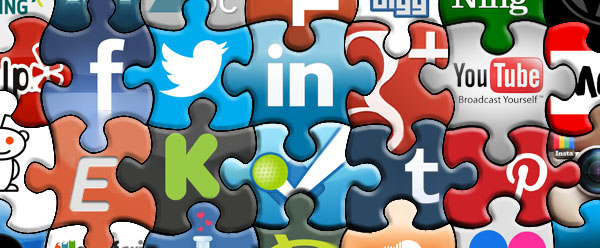
We’ve talked about content marketing trends for 2013 at the end of last year, but, with several recent reports providing up-to-date statistics on how consumers are putting their digital tools to good use, let’s a take another quick look at the trends that are now influencing marketing strategies.
First, some stats.
A PRWeb article published on the San Francisco Chronicle website quotes a PQ Media report on consumer digital media use. The “Global Consumer Usage of Digital Media Forecast 2013-17” is the second part of the three-part research series on the “global transition of consumers, media operators and brand marketers to digital media by country, medium and generation in the 2007-17 period.”
Among other things, it finds:
Consumer internet media usage is trending up 10.7% in 2013 to a weekly average of 2.8 hours worldwide, accounting for 46.7% of all time spent with digital media.
Mobile media consumption worldwide is pacing for 17.9% growth to an average of 1.3 hours, a 21.7% share of digital media usage…
A Mashable article by Zoe Fox quotes an eMarketer study released earlier this month that forecasts that this year Americans will spend more time consuming digital media than they would watching TV. The projected number is only slightly higher, but still: “four hours and 40 minutes online using either a mobile device or a computer, compared with four hours and 31 minutes watching TV.”
The rising number is due to access to the Internet via mobile devices, of course. Fox notes that in 2010, Americans spent 24 minutes a day consuming non-voice media on their phones. In 2013, the number was way higher: two hours and 22 minutes.
“The Infinite Dial 2013: Navigating Digital Platforms” report by Arbitron Inc. and Edison Research summarized survey data obtained in January-February 2013, providing “estimates of emerging digital platforms.” Here are a few highlights and observations from the report [emphasis ours throughout]:
- Media consumption is not a zero-sum game. Digital platforms do not replace media usage… [T]hey enhance it.
- Mobile device growth continues: more than half now own a smartphone; tablet ownership is up significantly in past year.
- Six in ten Americans have a profile on a social networking site (24% in 2008; 62% in 2013).
- An estimated 71 million Americans check their social network several times per day.
- Four in ten smartphone owners are habitual social network users.
Marketing trends to watch
In a July 23 article on Social Media Examiner, content marketing writer/blogger Patricia Redsicker commented on the report, saying:
The biggest takeaway from the Edison and eMarketer research is that audiences are dispersed across multiple channels and platforms. This presents its fair share of challenges for digital marketers as we try to keep up with omni-channel consumers.
If you know how media fragmentation works and how to engage with consumers across multiple channels and devices, you’ll maximize value for your brand.
Redsicker provided commentary on the six emerging trends she took away from the Arbitron/Edison Research report:
1. Media multitasking becomes the “new normal.”
Redsicker advises marketers to distribute content across as many platforms and channels as possible. “Make fast, confident decisions that give digital consumers opportunities to buy,” she writes.
2. Widespread smartphone adoption requires an app/content strategy.
With more people downloading apps and consuming social media content from their mobile devices, location-based marketing will keep growing in importance. Your content should reflect that, and be easy to view and interact with on the go.
3. “Content marketing is still king.”
“Focus on content marketing rather than advertising because consumers interact with content first, giving brands ideas or insights about what is important to them,” writes Redsicker.
4. Facebook still number one.
Use hashtags to cross-promote with Twitter, and Facebook’s Graph Search to target locally.
5. Users notice more branded content in their newsfeed.
Most users don’t visit a brand’s Facebook page, Redsicker notes. Instead, they interact with brands in their own newsfeed, which could be a good thing since they could be more “engaged and open to brand messages.”
She writes:
The opposite is true for users who just want to hang out with their friends. They’ll simply hide any brand content they don’t want to see (especially if those posts are frequent and intrusive).
We know that photos already make up 50% of news feed stories… To get consumers to interact with branded content on Facebook, marketers should make posts more visual and provide interesting yet relevant insights about your company.
6. Twitter is becoming more popular.
“Take advantage of the current Twitter-friendly multimedia environment and promote your brand among non-Twitter audiences,” Redsicker writes. “Encourage them to talk about you online using tweets, and in particular, using your brand’s hashtag.”
Consumers want “rapid-response” social content
Colin Nagy, an executive director of the marketing firm, The Barbarian Group, was right on the money in the article he penned for Forbes back in February, when he pointed out how many agencies have brand marketing expertise to produce great content but lack the internal structure to produce what he called the “rapid-response” social content that “reacts quickly to culture.” That’s why marketers and pro bloggers increasingly use Facebook and Twitter in addition to maintaining a blog, and why we see so many consumer reviews on sites like Amazon and Yelp.
Part of the shift is “that the professional blogging class, particularly in technology, can be prone to herd thinking that doesn’t necessarily reflect consumer sentiment,” wrote Nagy. “[S]ometimes the influencer bubble can be deceiving and does not reflect what is going on in reality.” But that’s fodder for another post, perhaps.
Image by greyweed.